For most types of crochet, you don't need any supplies beyond your hook and yarn. But with Tunisian crochet, you do need to expand your toolkit.
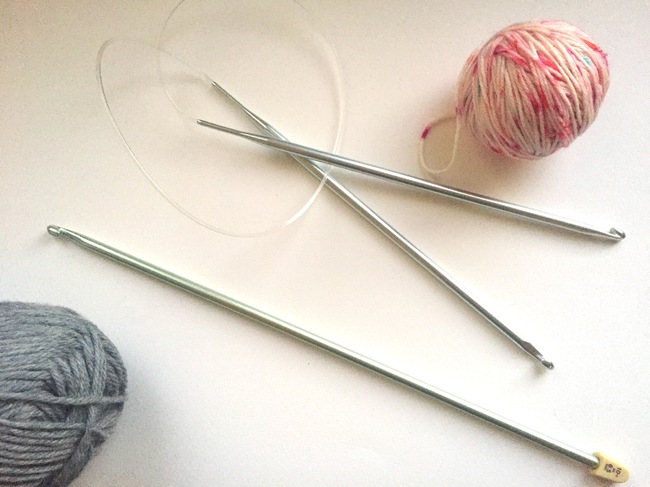
Images via Kathryn Vercillo of Crochet Concupiscence (unless otherwise noted)
First and foremost, you'll need a special hook for Tunisian crochet.
Getting started without a special hook
Before you go shopping, you can actually practice the Tunisian crochet basics with your regular crochet hooks. This is a great way to get started, but you'll only be able to work very small projects.
Keep in mind, though, that you can't use just any regular hook: Choose a crochet hook with a narrow shaft and no wide thumb grip. You need to hold loops of yarn on the hook, so you want the hook to be the same size from hook to tip.
If you're curious about trying Tunisian crochet on a regular hook, a good place to start in is with Tunisian entrelac crochet.
Once you’re ready to get a Tunisian crochet hook, there are options.
1. Tunisian crochet hooks with one head
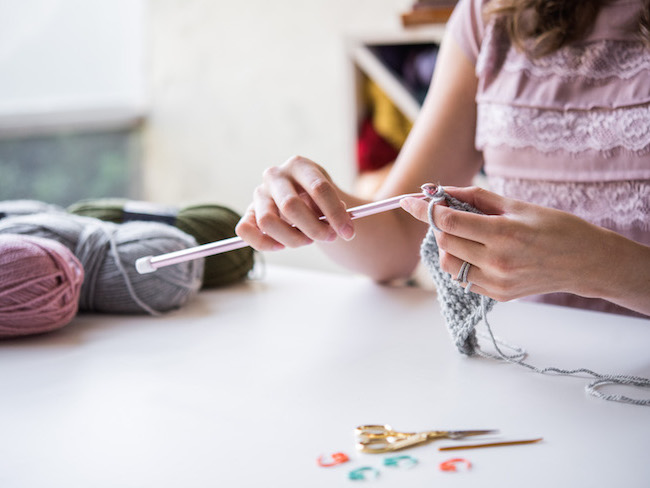
This type of hook is a great starter for those just learning Tunisian crochet. These look almost exactly like classic crochet hooks, except they're a lot longer so they can hold many hoops and give you more room to work.
They also have some type of knob on the end of the tool opposite the hook to prevent your loops from falling off of that other end.
2. Flexible Tunisian crochet hooks
If you plan to work large crochet projects in rows, you might want to try "flex hooks." These are just like Tunisian crochet hooks but they have a flexible cable at the end opposite the hook, typically ending in some kind of knob.
The flexible cable lets you hold many, many more loops to create very wide Tunisian crochet projects such as blankets.
Cables come in handy because loops can rest on the cable, which makes the hook easier to maneuver. The longer the Tunisian crochet hook, the tougher it can be on the hands to work with. This way, you still get the length without a long, difficult-to-use hook.
3. Tunisian crochet hooks with two heads

Clover Double-Ended Tunisian Crochet Hooks
Some Tunisian crochet hooks have a hook head on either end.
This type of hook is most frequently used when working Tunisian crochet in the round, but can also be useful for colorwork.
You may notice that on some hooks, the two heads point in the same direction while on others they point in different directions. There's no "right" way, so try both to see what you like best.
4. Circular Tunisian crochet hooks
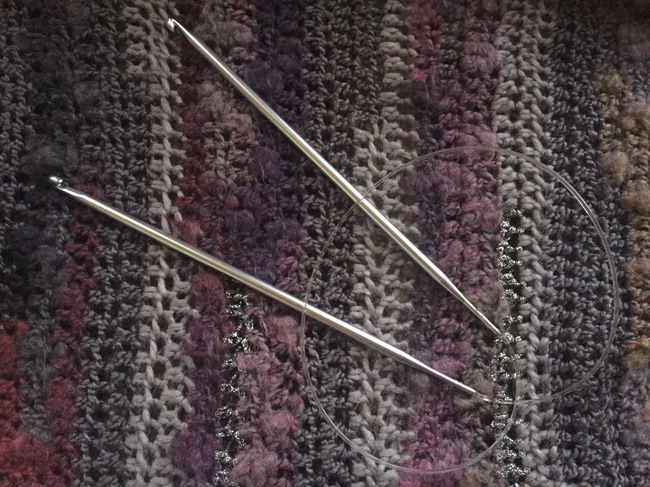
A circular Tunisian crochet hook (also called a hook set with cables) is an alternative to the double-headed hook. This tool consists of two single-head crochet hooks that are connected at the base with a flexible cable.
Essentially, this serves as a double-headed crochet hook. The cable in the center can holding long lengths of loops when working on large crochet projects.
Tip: You can get interchangeable crochet hook systems that allow you to swap out different cable lengths with the various size crochet hook heads.
Here's what you need to know before choosing a Tunisian crochet hook.
Ultimately, it's best to try different types of Tunisian crochet hooks to see what works best for you. But as you're getting started, keep these tips in mind.
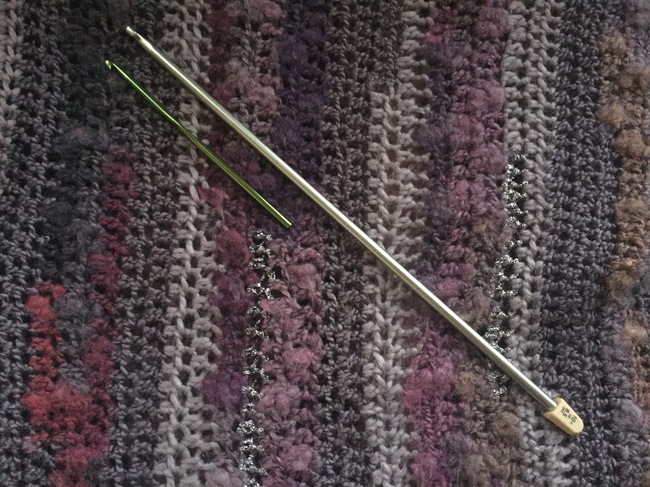
Consider thhe length of your Tunisian crochet hook
Classic single-head Tunisian crochet hooks comes in many different sizes. On average, they're between 10" and 14".
Beginners sometimes find shorter hooks easier to work with. However, you can make projects only as wide as the number of loops your hook can hold. If you want to make larger crochet projects, aim for the 14" size or larger.
Pick the right size to start
As with regular crochet, you'll use a hook size that corresponds with the weight of your yarn.
Particularly in Tunisian crochet, many crocheters find it easier to use a hook that's 1-2 sizes above the standard given for a yarn. For example, you'd typically use a G hook for worsted weight yarn, but in Tunisian crochet, you might try a size H or I with that same yarn.
Your best bet as a beginner is to a buy a set of several Tunisian hooks that vary in size.
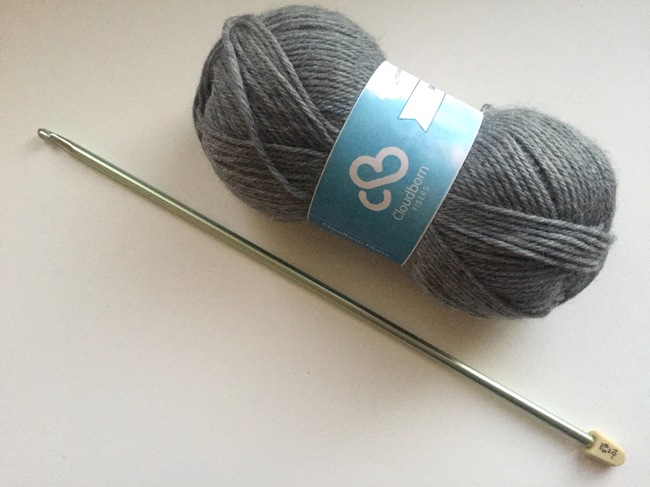
Practice using your hook with simple Tunisian crochet stitches
Tunisian crochet hooks can take some getting used to! It's best to practice a lot with basic Tunisian crochet stitches (such as Tunisian simple stitch) before going on to stitches that are harder to manipulate (such as Tunisian purl stitch).
Choose yarn with the project's structure in mind
Tunisian crochet tends to have less drape and a denser structure than regular crochet (particularly with the Tunisian knit stitch). If you want to create a project with more drape, work with a lightweight yarn.
Don't forget about your regular crochet supplies
Other than the new hooks, you won't have to purchase anything extra for Tunisian crochet. You can use the supplies you already have, including stitch markers, a tapestry needle, a row counter and a tape measure.

I need a p-15 hook. Do you have this size.
Just starting again with crochet, re- inventing the wheel after years ha ha
Where can I buy a 2 head crochet hook for Tunisian crochet? I have tried so many craft stores and most of them don't even know what Tunisian is or what a 2 headed hook looks like. I have several 14" but need 7" or 10". Muriel Bailey
I have been doing tunisian crochet for about a month and LOVE it. I hope that over the next year to find classes and patterns working with double-ended hooks both in the round and flat color work.
super mais en dvd le vendez vous
Im a beginner in knitting and Crocheting and tunisian. Would like to learn. I reside in South Africa.